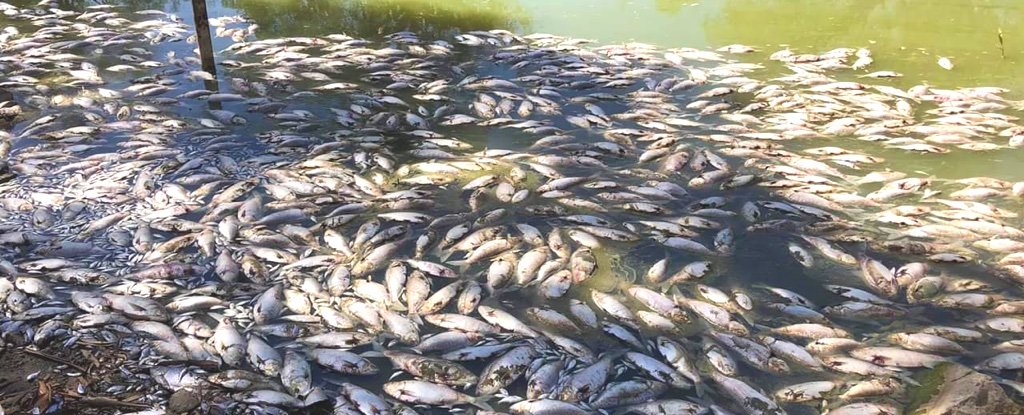It started
in December, just before Christmas.
Hundreds of
dead perch were discovered floating along the banks of the Darling River –
victims of a "dirty, rotten green" algae bloom spreading in the still
waters of the small country town of Menindee, Australia.
Things
didn't get better. The dead hundreds became dead thousands, as the crisis
expanded to claim the lives of 10,000 fish along a 40-kilometre (25-mile)
stretch of the river. But the worst was still yet to come.
This week,
the environmental disaster has exploded to a horrific new level – what one
Twitter user called "Extinction level water degradation" – with reports suggesting up to a million fish have now been killed in a new instance
of the toxic algae bloom conditions.
The Liberal/Nationals management of the Menindee Lakes over seven years has been diabolical. You can't have mismanagement on this scale and do favours for big irrigators without wrecking the Darling River. This is a disgrace #nswpol @2GB873 pic.twitter.com/4896GCRJsM— Jeremy Buckingham 🌏 (@greensjeremy) January 7, 2019
For their
part, authorities in the state of New South Wales have only gone as far as
confirming "hundreds of thousands" of fish have died in the event –
but regardless of the exact toll, it's clear the deadly calamity is an
unprecedented ecological disaster in the region's waterways.
"I've
never seen two fish kills of this scale so close together in terms of time,
especially in the same stretch of river," fisheries manager Iain Ellis
from NSW Department of Primary Industries (DPI) explained to ABC News.
The DPI
blames ongoing drought conditions for the algae bloom's devastating impact on
local bream, cod, and perch species – with a combination of high temperature
and chronic low water supply (along with high nutrient concentrations in the
water) making for a toxic algal soup.
Weather
snaps can worsen conditions, killing algae, which depletes oxygen levels in the
water, further jeopardising fish.
But a number
of Menindee locals don't buy the official line, saying a history of
ill-considered water management in NSW has diverted flows along the Darling
River, creating dangerously stagnant conditions that are now
In an
emotional video that went viral this week on Facebook, two such locals filmed
themselves standing in the stagnant water, surrounded by the lifeless corpses
of dead fish.
"This
is nothing to do with drought, this is a man-made disaster," one says.
Others
agree, saying the horrific effects we're seeing are a combination of the
drought on top of the effects of unsustainable water flow diversions that are
"choking the life out of the system downriver", in the words of one
independent MP.
The worst
part is, it looks like things will get worse before they have a chance to get
better.
"These
types of events are likely to become more frequent, given there is a lot of
diversion of water for irrigation upstream," environmental scientist
Richard Kingsford from UNSW told AAP.
"The
drought would not have as much impact if there was more water in the river and
if there was more water in the river, the water quality would be better and the
fish probably wouldn't be as badly affected."

Comments
Post a Comment